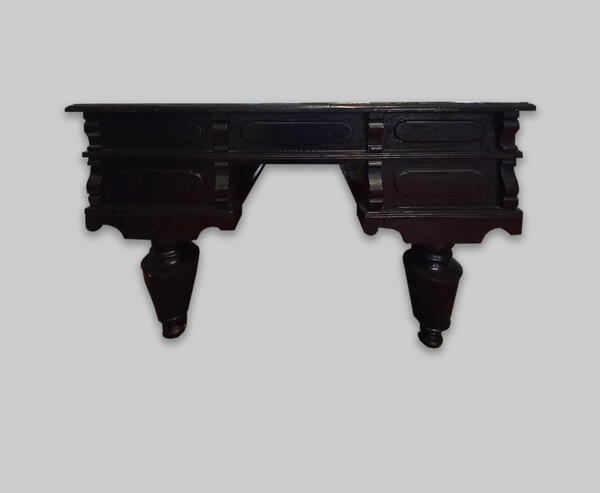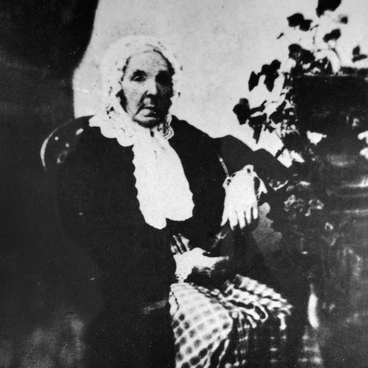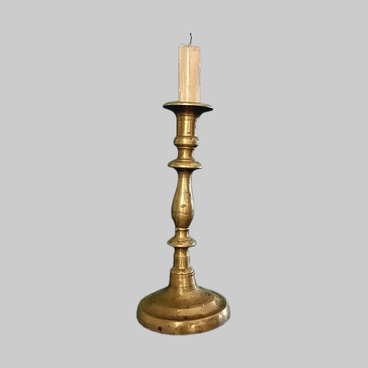This large office desk was made in the early 20th century. According to a theory, it belonged to Olga Grigorievna Aksakova, the writer Sergey Timofeevich Aksakov’s granddaughter and the founder of a koumissotherapy clinic in the village of Nadezhdino. If this is true, this table may have been located in her office in the clinic.
This massive office desk has several sliding drawers on the side, with another one under the worktop. Its legs are carved, made out of solid wood. The work surface of the table is covered with dark green cloth. According to numerous sources, this color was chosen not for aesthetic, but rather for ergonomic reasons: it was believed that this color helps to focus. That is why there was a fashion not only for office furniture with upholstery of such color, but also, for example, lamps with dark green lampshades.
On the office desk, displayed in the “Large sitting room” exposition, there are writing instruments, a desk lamp, an alarm clock, various books, as well as a portrait of Ivan Sergeevich Aksakov – the famous Slavophile, publicist and public figure, and uncle of Olga Grigorievna. She undoubtedly shared his democratic views and warm attitude towards peasants: Olga Aksakova’s generosity was well known throughout the Bashkir region.
Many historians suggest that the first tables appeared not out of a man’s desire to make his life more comfortable, but out of fear of pagan gods, demanding sacrifices. Fearing that they will not accept a sacrifice performed in an ordinary place, the ancient man built special altars for those rituals, which became the ancestors of the modern table. Later, the Egyptians separated the tables by their intended purpose: ones for work, and ones for meals.
Presumably, tables appeared in Russia in the 10th century, that is, almost simultaneously with the appearance of the country itself. In Ancient Russia, the table always occupied an honorable place and usually was the center of the room, regardless of whether it was the boyars’ chambers or a peasant hut. Dahl’s dictionary claims that the Russian word for table — “stol” — was derived from the Old Russian verb “stlat” or “stelit” – meaning lay (something) down, usually used when talking about cloth items, such as table cloth or bedsheets. Back then, the word “stol” not only meant a table for work or lunch, but was also the name of the Tsar’s throne. This is how the Russian word for ‘capital’ — ‘stolitsa’ — appeared in the Russian language.
This massive office desk has several sliding drawers on the side, with another one under the worktop. Its legs are carved, made out of solid wood. The work surface of the table is covered with dark green cloth. According to numerous sources, this color was chosen not for aesthetic, but rather for ergonomic reasons: it was believed that this color helps to focus. That is why there was a fashion not only for office furniture with upholstery of such color, but also, for example, lamps with dark green lampshades.
On the office desk, displayed in the “Large sitting room” exposition, there are writing instruments, a desk lamp, an alarm clock, various books, as well as a portrait of Ivan Sergeevich Aksakov – the famous Slavophile, publicist and public figure, and uncle of Olga Grigorievna. She undoubtedly shared his democratic views and warm attitude towards peasants: Olga Aksakova’s generosity was well known throughout the Bashkir region.
Many historians suggest that the first tables appeared not out of a man’s desire to make his life more comfortable, but out of fear of pagan gods, demanding sacrifices. Fearing that they will not accept a sacrifice performed in an ordinary place, the ancient man built special altars for those rituals, which became the ancestors of the modern table. Later, the Egyptians separated the tables by their intended purpose: ones for work, and ones for meals.
Presumably, tables appeared in Russia in the 10th century, that is, almost simultaneously with the appearance of the country itself. In Ancient Russia, the table always occupied an honorable place and usually was the center of the room, regardless of whether it was the boyars’ chambers or a peasant hut. Dahl’s dictionary claims that the Russian word for table — “stol” — was derived from the Old Russian verb “stlat” or “stelit” – meaning lay (something) down, usually used when talking about cloth items, such as table cloth or bedsheets. Back then, the word “stol” not only meant a table for work or lunch, but was also the name of the Tsar’s throne. This is how the Russian word for ‘capital’ — ‘stolitsa’ — appeared in the Russian language.



